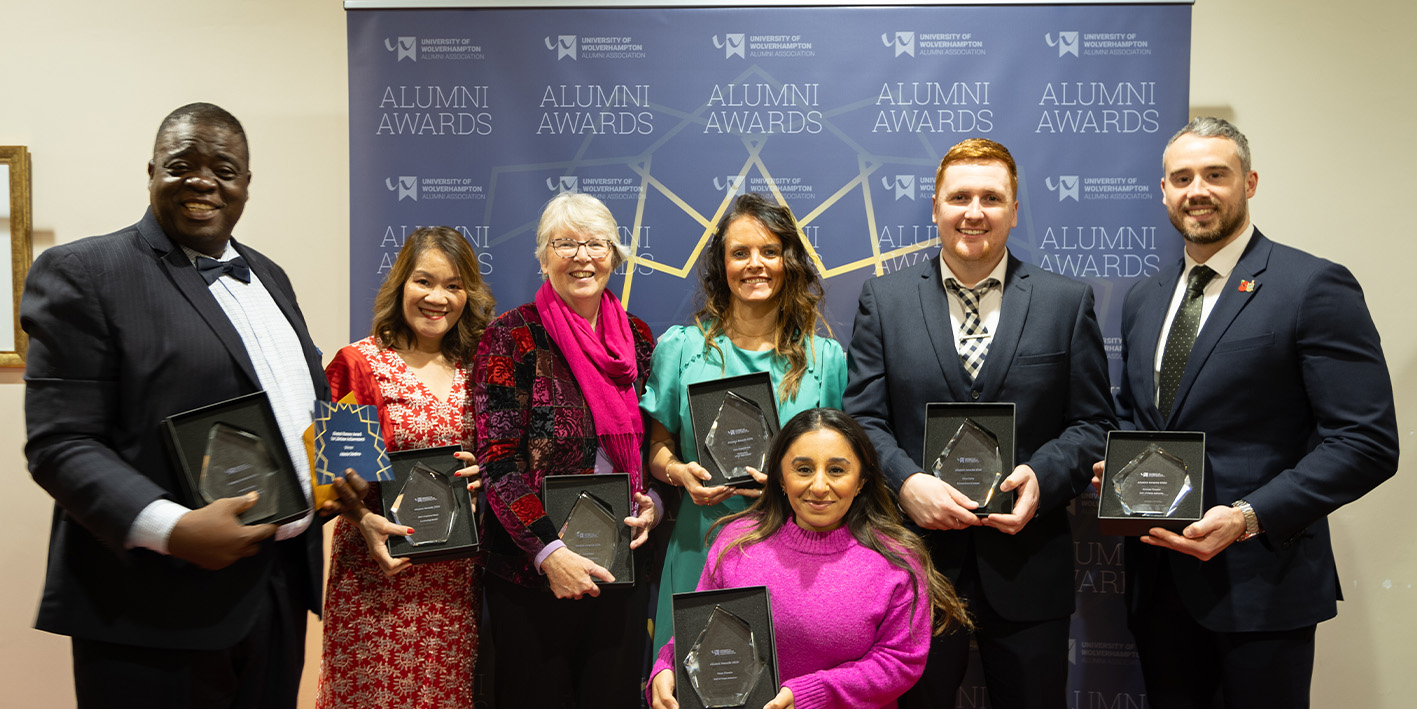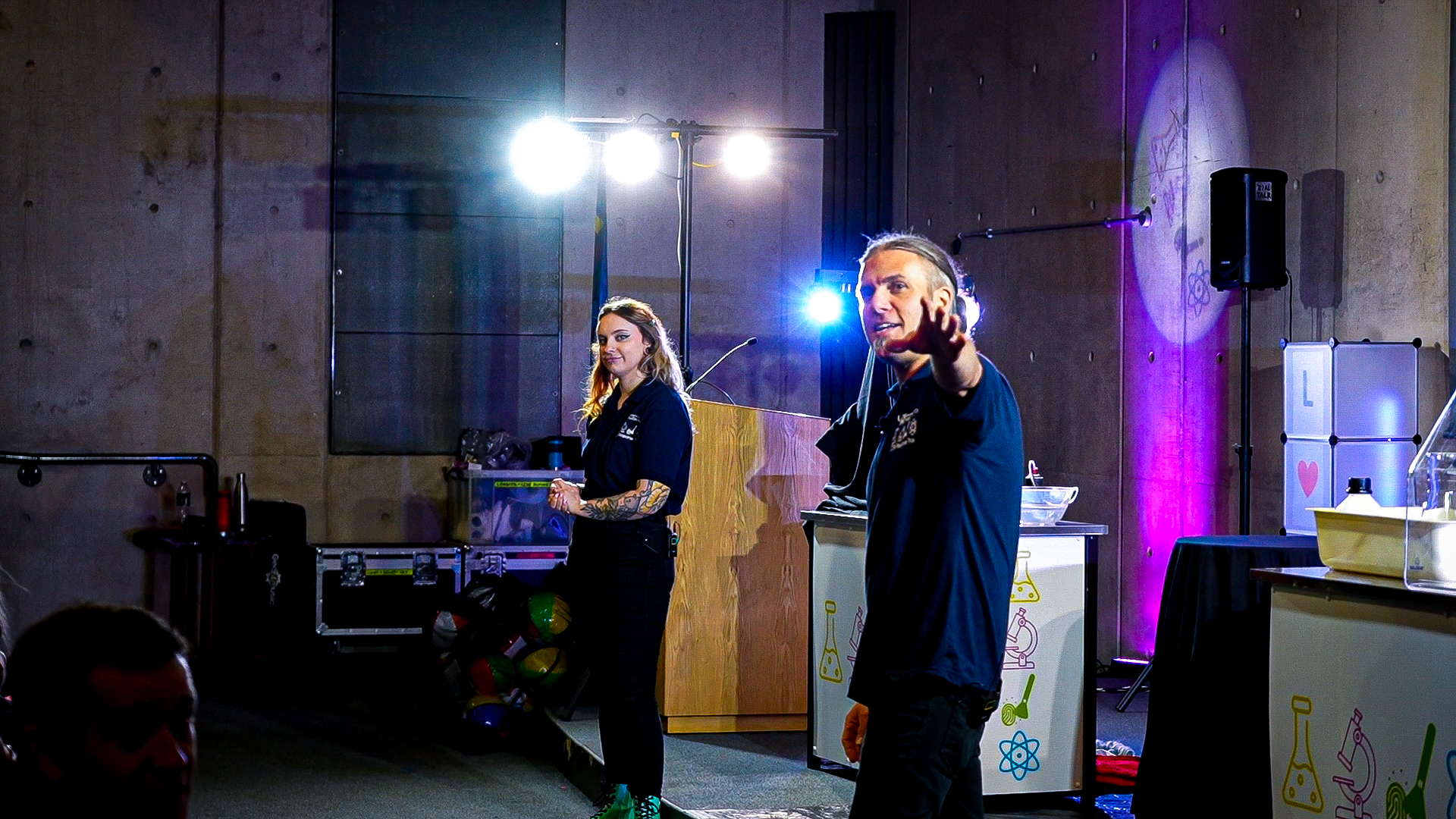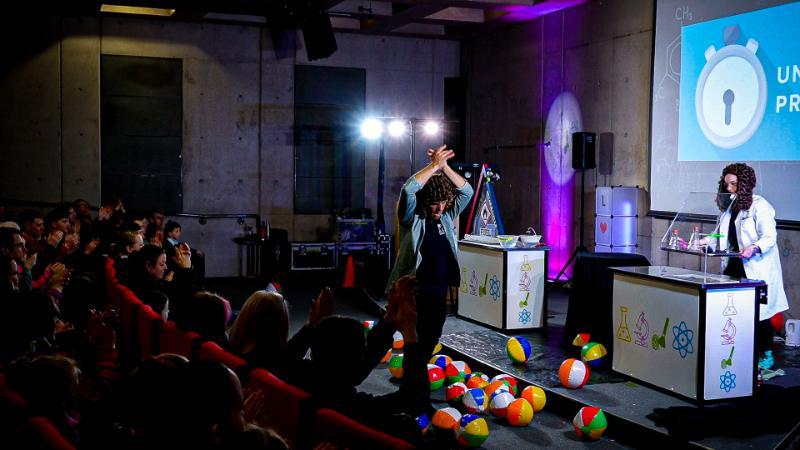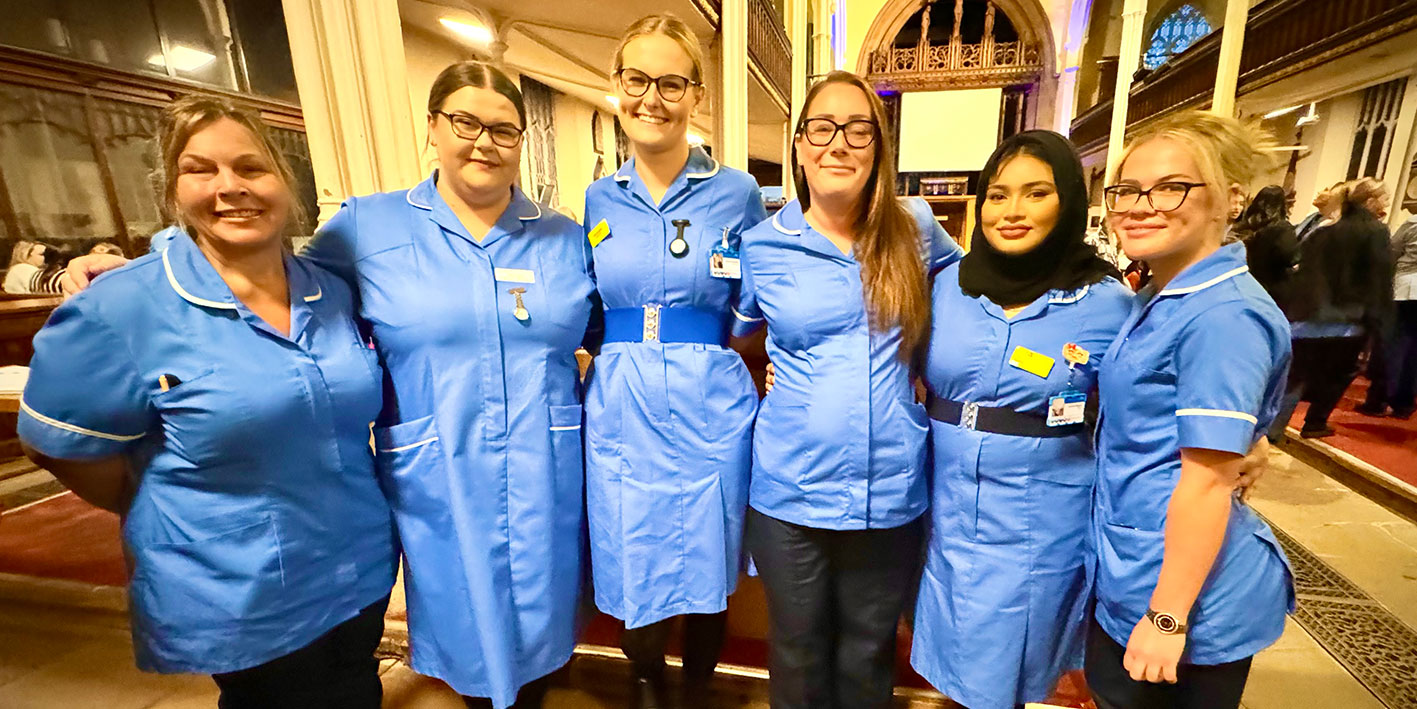
Easter: A Volatile History of Chemistry

Will Jarman, Blogger in Residence at the RAF Museum Midlands gives us an explosive insight into the University of Wolverhampton's 'A Volatile History of Chemistry' - delivered by the University's STEM team over the Easter break at the RAF Museum Midlands.
We had a great day at the RAF Museum Midlands with yet another illuminating performance in the museum’s theatre. Last month, it had been an adventure around the inside of the Lancaster bomber. This month my son, accompanied by two of his cousins, chose a show that explained some of the science behind rockets, jet engines, and all manner of other excuses to make loud noises.
‘A Volatile History of Chemistry’ was expertly delivered by a team from the University of Wolverhampton’s STEM Response Team. Check them out here.
The Team were amazing, a high energy time travelling cabaret act, with pops, bangs and the kind of carefully aimed explosive interludes that make for a lesson and a half. They also have fabulous wigs. Time travel is always better off when the wig choice matches the century you are thrown into. This ought to be the first law of travelling through different dimensions. I might write the textbook.
First came a romp though the states of matter; solids, liquids and gases; aided by a balloon model giraffe and a festive sprinkling of beach balls. Then there was much to learn about the propulsion, explosion and inner workings of the ‘doodlebugs’ visitors might have met in the Bomber Command Exhibition in the adjacent hangar.

Everything was exceptionally well paced, and encompassed the wider scientific world while keeping a careful eye on the airframes and projectiles among the museum’s exhibits. The show felt very much at home at the RAF Museum Midlands, with so many links to all of the exciting stuff ‘upstairs’, the theatre is nestled beneath the Avro Vulcan.
No balloon giraffes were harmed in the fifty minute show. They took on the riskiest demonstrations that were too perilous for even the keenest volunteers.
(Checking notes, perhaps one balloon giraffe was harmed a little, but we felt it was in good hands, and would bravely return for that afternoon’s matinee…)
Audience participation worked well, my son bravely volunteered his cousin for one of the more explosive demonstrations, creating the dramatic picture above. He was as well briefed as a fighter pilot, and was given safety spectacles to ensure his eyebrows did not become part of the experiment. I checked afterwards, he loved it.
Plenty of consideration was given to more nervous members of the audience, the safety of eyebrows, eardrums and the calming of nerves was an absolute priority. A great balance, plenty of flashes and bangs, but no abrupt surprises. The team made for super-inclusive environment, knowing that within every room full of young scientists, there will always be a number who will frighten easily. No piercing pop or fireball came without careful warning. Well done all round.
We left the theatre with smiles on all of our faces, and untroubled eardrums.
Even I enjoyed brushing up on some of the basics, realising that my GCSE in Chemistry is a little rusty. After all, a lot can change in thirty years. A balloon giraffe is as instructive to the parents as it is to the kids.
We went on to explore the Hangars, of course. We found the half hour before our 1030 Chemistry show started perfect for exploring Hangar 1 and its Chinook, with an excellent introduction by a guide, before the crowds arrive. The children also loved the collection of models of ‘never built’ experimental aircraft in Hangar 2, nestled under the nose of the Kestrel. Each model told a story as rich as the more famous ‘very much built’ machines alongside it. The museum has many of these relatively obscure exhibits which continue to fascinate. I hope to explore the future of Hangar 1, and the mind boggling depth of the museum’s more unusual exhibits and their future home, in the next blog post.
The original blog post can be found here.
For more information please contact the Corporate Communications Team.


/prod01/wlvacuk/media/departments/digital-content-and-communications/images-2024/Diane-Spencer-(Teaser-image).jpg)
/prod01/wlvacuk/media/departments/digital-content-and-communications/images-18-19/220325-Engineers_teach_thumbail.jpg)
/prod01/wlvacuk/media/departments/digital-content-and-communications/images-2024/241024-Dr-Christopher-Stone-Resized.jpg)
/prod01/wlvacuk/media/departments/digital-content-and-communications/images-2024/UoW-City-Campus-(Teaser-Image).jpg)
/prod01/wlvacuk/media/departments/digital-content-and-communications/images-2024/241014-Cyber4ME-Project-Resized.jpg)
/prod01/wlvacuk/media/departments/digital-content-and-communications/images-2024/240315-Research-Resized.jpg)
/prod01/wlvacuk/media/departments/digital-content-and-communications/images-2024/Alumni-Awards-2024.jpg)
.jpg)
